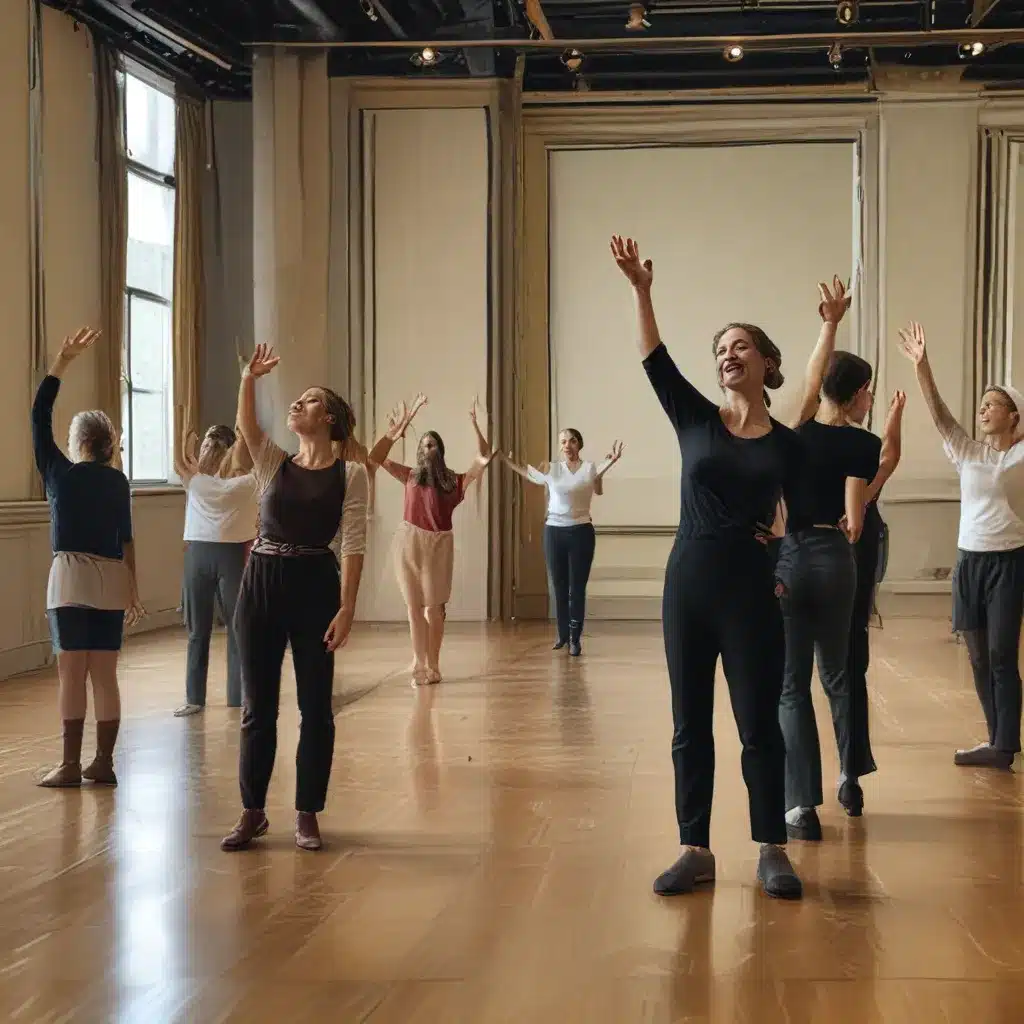
The Director’s Dilemma
One day, an idealistic director named Stanislavska had an encounter that would forever shape her approach to reviving forgotten theatrical gems. She met an academic who delivered a sobering message: it was her duty to breathe new life into Shakespeare’s lesser-known, yet deserving, contemporaries.
Undaunted, Stanislavska dove headfirst into the dusty archives, searching for a text that hadn’t seen the light of day in centuries. What she found, however, was a work of “fiendish difficulty” – the product of a mysterious “Compositor ZZZ,” with an edition so arcane that it left precious little indication of how the play should be staged.
Determined to make sense of this obscure masterpiece, Stanislavska embarked on a journey that would test the limits of her creativity and the patience of her cast. Drawing inspiration from the likes of Barry Kyle and John Caird, she devised strategies to help the actors navigate the text’s treacherous terrain. From individual research projects to carefully curated program notes, Stanislavska left no stone unturned in her quest to make the play coherent for her audience.
The Critic’s Conundrum
But alas, the director’s efforts were met with a harsh reality: when the curtain finally rose, the critics unanimously declared that the play “isn’t as good as Shakespeare.” Worse still, the academic who had initially encouraged Stanislavska’s undertaking now doubled as a reviewer, gleefully trashing the production for being “too funny” or “ideologically unsatisfactory.”
Faced with this daunting scenario, Stanislavska couldn’t help but wonder: why is it so difficult to find directors willing to take on these rare theatrical gems? The academic reviewer’s dilemma, it seemed, was a two-faced affair. On one hand, they recognized the importance of preserving and reviving these forgotten works. But on the other, they couldn’t resist the temptation to hold these productions to the same lofty standards as the Shakespearean canon.
As the academic reviewer mused, “It’s hard not to be impressed by anyone who takes on the real rarities in the first place.” After all, these plays often languish in obscurity, with only the occasional annotated edition to keep them alive. Even when they do grace the stage, the director’s triumph is often met with silence, as the commercial press rarely deigns to review such productions.
The Endless Cycle
The director’s tragedy, it seems, is an endless cycle of high-minded ambition and harsh reality. Stanislavska, like so many before her, had dared to tackle a forgotten masterpiece, only to be met with indifference or outright disdain.
But, as the academic reviewer observed, there is a certain allure to these theatrical rarities. They may not be “neglected masterpieces,” but they hold the promise of a genuine illumination – a performance that can transform the way we understand the early modern dramatic canon.
The challenge, of course, lies in navigating the treacherous waters of historical context and audience expectations. Directors like Stanislavska must walk a fine line between respecting the integrity of the text and making it accessible to a modern audience.
Bridging the Gap
Over the years, directors have developed various strategies to bridge this gap. Some, like Philip Prowse’s high-camp interpretation of “The Massacre at Paris,” have chosen to embrace the decadence and stylization of the Jacobean aesthetic. Others, like Trevor Nunn’s “The Fair Maid of the West,” have sought to uncover the “niceness” and “generosity” of Elizabethan dramatists, even if it means sanitizing their more unsavory elements.
And then there are the bold innovators, like the director who staged “Edmond Ironside” as a lost Shakespearean play, or Toby Robertson, who emphasized the thematic connections between “Edward III” and the Bard’s own work. These directors have recognized that the key to reviving these forgotten gems lies in finding the universal, timeless themes that resonate with modern audiences.
The Evolving Landscape
The theatrical landscape has evolved significantly since Stanislavska’s initial struggles. The rise of venues like the Globe and the Blackfriars in Staunton, Virginia, have opened up new avenues for exploring the full breadth of the early modern dramatic canon. These spaces have embraced a more actor-centric approach, with minimal rehearsal time and a focus on textual understanding over directorial vision.
As the academic reviewer reflects, “Can the revival of the full range of early modern drama come only at the expense of the director?” Perhaps it’s time for a new balance, one that harnesses the energy and insight of both the director and the ensemble.
A Call to Arms
And so, I make a humble plea to Stanislavska and her fellow directors: embrace the challenge of these forgotten gems. Dive headfirst into the obscure, the difficult, and the seemingly unproducible. For in doing so, you might just uncover a true theatrical diamond in the rough – a work that, with the right touch, can captivate and enlighten modern audiences in ways we never imagined.
After all, as the Musical Theater Center has long recognized, the true magic of the stage lies in its ability to breathe new life into the old, to reveal the timeless truths that lie buried within the past. So take up your sword, Stanislavska, and let the Rehearsal Renaissance begin!

